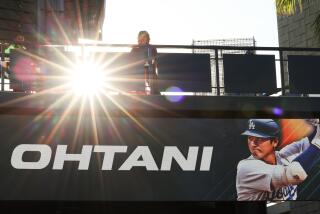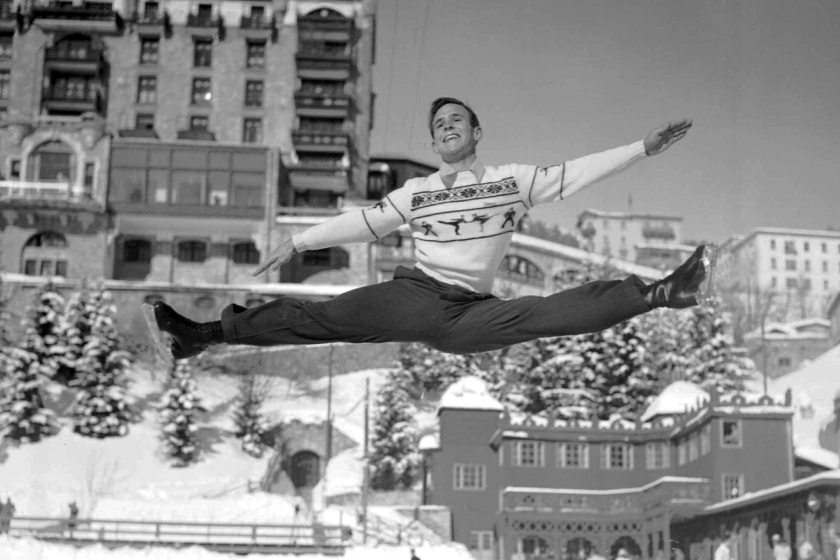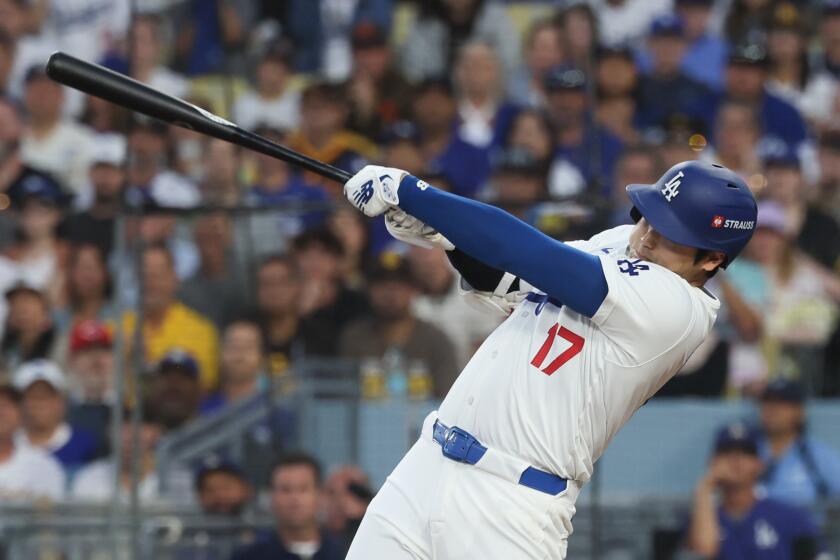Sports Sponsors Will Have Many Choices in 1998
- Share via
Sure, many of the world’s best athletes will be in Nagano, Japan, for the Winter Olympics and in France next summer for the soccer World Cup finals. But a pair of domestic developments should keep U.S. sports marketing experts engrossed during 1998.
It’s just speculation, but National Basketball Assn. star Michael Jordan could retire in the spring to try to take his golf game--and his sports marketing machine--to new heights.
The resulting question: How will the league and its sponsors come to grips with life after Jordan--a scary thought in a professional sport increasingly known for kneeing, slapping, choking and cussing.
Next on the domestic agenda: How high the tab will go when the National Football League and its broadcast partners renegotiate a $4-billion television rights package that, experts agree, could double in size.
If the broadcast rights fee mushrooms to $8 billion, observers say that some sponsors will seriously reconsider their decision to pony up for the opportunity to help turn the likes of Barry Sanders and Brett Favre into household names.
For many U.S.-based companies, such matters overshadow marketing opportunities offered by the Winter Games and the World Cup.
“Here we are under 60 days away from the opening ceremony, and the Olympics on CBS almost seems like a nonevent,” said Rick Burton, director of the Warsaw Sports Marketing Center at the University of Oregon in Eugene. “That’s nothing against CBS. . . . it’s just that the Winter Games don’t play as well as the Summer Olympics--unless the figure skaters are hitting each other in the knees with pipes.”
Overseas, corporate sponsors will benefit from fans’ belief that soccer is right up there with two other important issues--life and death.
“There’s a phenomenal battle going on for the feet and backs of soccer players worldwide,” said Mark Coopersmith, executive vice president of Sony Signatures, a Sony Inc. division that’s handling licensing for the games. “And there are some major marketing sponsors who are using the global nature of the Cup to enhance their brands.”
But soccer continues to struggle here at home.
The World Cup games were a sellout in 1994 when they were held at U.S. venues. Major league soccer continues to grow, and fans were beaming in 1996 when “soccer moms” entered the political lexicon.
There’s no single strategy, observers said, for how soccer’s corporate allies are using the sport to market wares.
Adidas, the sportswear giant, is spending heavily on World Cup sponsorships and licensing activity to build its $3-billion-a-year soccer business. General Motors Corp. will use the tournament to showcase its Opel nameplate in Europe, while MasterCard will use its World Cup affiliation to build its brand and business in the United States.
Buoyed by Winter Olympics activity and higher price tags for other major sporting events, worldwide spending on corporate sponsorships will grow by 13% to $17.4 billion next year, according to Chicago-based IEG Inc. Sports will account for 74% of total sponsorship spending, up from 73% in 1997.
IEG’s list of the leading corporate sponsors in North America during 1997, as reported by the Associated Press, is topped by Philip Morris Cos., which spent at least $140 million to promote its Kraft Foods and Miller Brewing brands. Rounding out the top five are: Anheuser-Busch Cos., Coca-Cola Co., General Motors Corp. and PepsiCo Inc.
More to Read
Go beyond the scoreboard
Get the latest on L.A.'s teams in the daily Sports Report newsletter.
You may occasionally receive promotional content from the Los Angeles Times.






